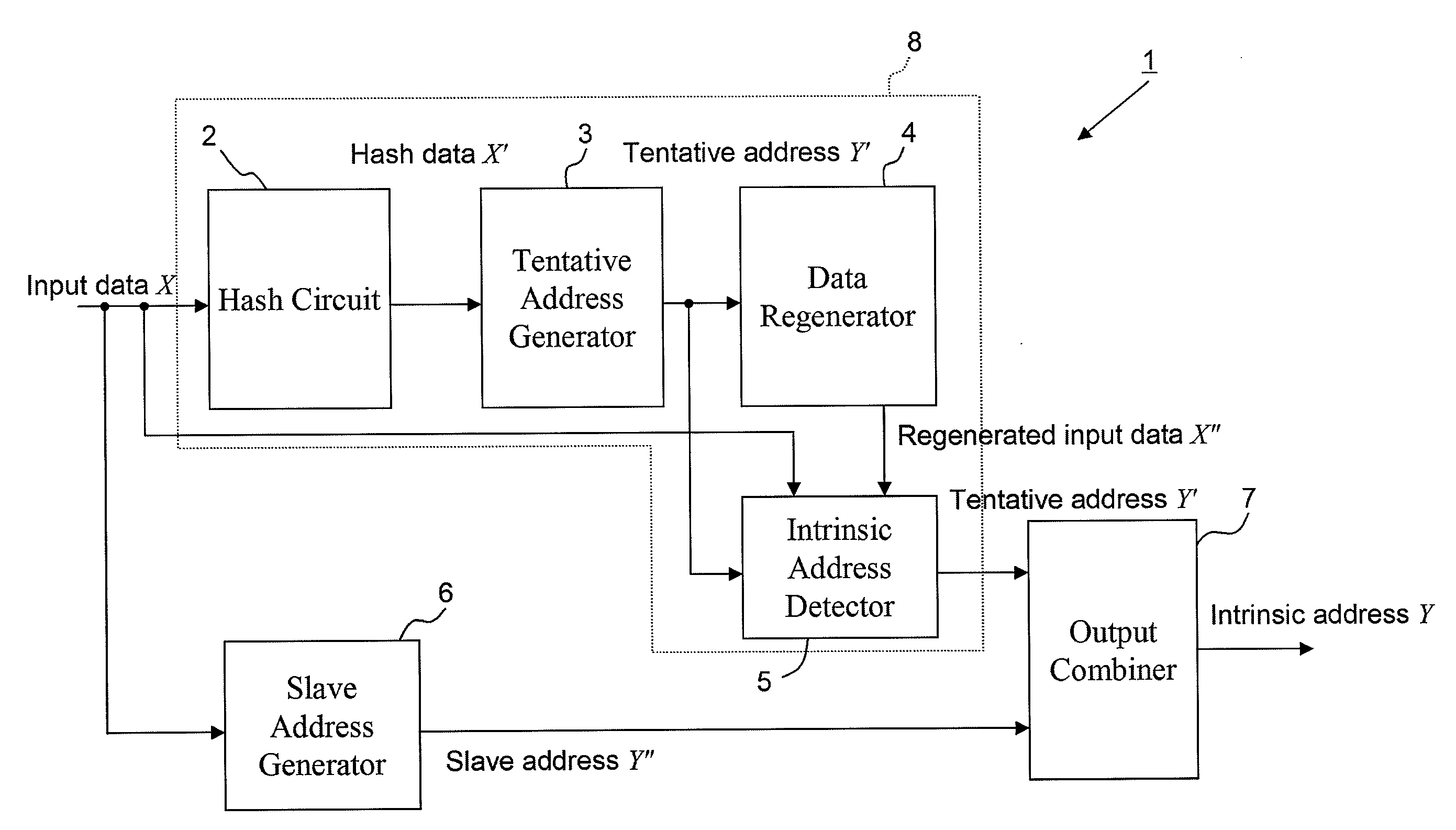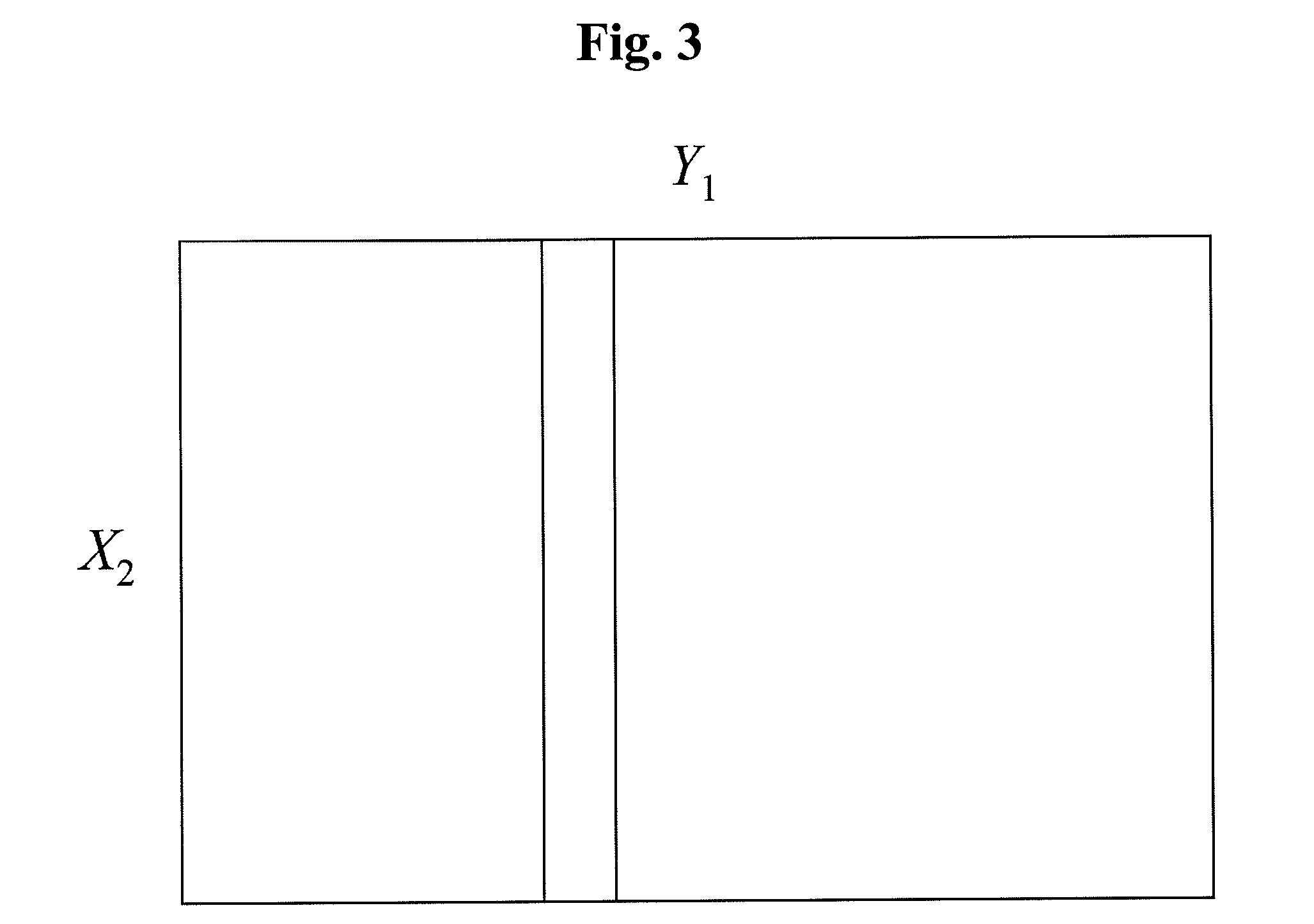Address generator
a technology of address generator and address generator, which is applied in the direction of micro-instruction address formation, memory address formation, allocation/relocation/relocation, etc., can solve the problem of very slow speed of the address generator realized by software, and achieve the effect of reducing the overall network scale of the address generator, suppressing power consumption, and simplifying the structure of the devi
- Summary
- Abstract
- Description
- Claims
- Application Information
AI Technical Summary
Benefits of technology
Problems solved by technology
Method used
Image
Examples
embodiment 1
[0158]In the embodiment, a case of one master address generator will be explained (hybrid method).
[1] Configuration of Address Generator
[0159]FIG. 4 is a block diagram showing a functional configuration of the address generator according to the embodiment 1 of the present invention.
[0160]The address generator 1 according to the embodiment has a hash network 2, a tentative address generator 3, a data regenerator 4, a unique address detector 5, a slave address generator 6, and an output combiner 7.
[0161]The address generator 1 is a calculator for calculating an address generation function f(X) having a weight k. That is, when an input vector X is applied from the outside and a registered vector corresponding to the input vector X exists, the address generator 1 produces a unique address A of the registered vector. Otherwise, the address generator 1 produces “invalid value” 0.
[Expression16]f(X)={A(ifX∈R)0(otherwise)(however,A∈{1,2,…,k},Risasetofregisteredvectors)(4)
[0162]Here, the inpu...
example 5
[0204](Table 4) shows the degradation table of the address generation function f(X1, X2) of six variables having the weight k=7. The degradation table of the function f̂(Y1, X2), which is obtained by replacing the bound variable X1=(x1, x2, x3) to Y1 by the function as shown in the next formula (14) and hashed, is shown in (Table 5).
[Expression 27]
Y1=(y1, y2, y3)=(x1⊕x6, x2⊕x5, x3⊕x4) (14)
[0205]In the hashed function, the columns of the original function are replaced. Further, each row employs a different replacement method. In the original function, two non-zero elements exist in the columns of (x1, X2, x3)=(0, 0, 0), (0, 1, 0), (0, 0, 1). In contrast, in the function f̂ (X1, X2) shown in (Table 5) after it is hashed, two non-zero elements exist only in the columns of (yr, y2, y3)=(0, 1, 0). The degradation table of the function f1̂(Y1, X2), in which the non-zero element 4 that is larger one of the two non-zero elements is replaced with 0, is shown in (Table 6). Further, (Table 7)...
example 6
[0220]A case of n=40, k=1730 will be examined. At the time, since Expression 32 is established, the number of pieces of the variables of the bound variable is set to p=13.
q=┌ log2(k|1)┐=┌ log2(1730|1)┐=11 [Expression 32]
(1) When Realized Only by LUT Cascade
[0221]When the number of inputs of cells is set to p=13, the number of stages of a cascade is as shown in Expression 33 from (Theorem 2).
[Expression33]⌈n-qp-q⌉=⌈40-1113-11⌉=⌈292⌉=15
[0222]The amount of a memory per cell is 2p×q=213×11 bits. Accordingly, the total amount of the memory is 213×11×15=1,351,680 bits.
(2) When Realized by Address Generator 1 of Present Invention
[0223]Since s=n−q=40−11=29, r=n−p=40−13=27, the assumption of the approximation of (Theorem 4) is established. Expression 34 is established from (Theorem 4).
[Expression34]δ≃1-12(k2p)+16(k2p)2=1-12(1730213)+16(1730213)2≃0.901(20)
The hash memory 3′ has p=13 input q=11 output, and the auxiliary memory 4′ has q=11 input n=40 output. The LUT cascade 6′ realizes an addr...
PUM
 Login to View More
Login to View More Abstract
Description
Claims
Application Information
 Login to View More
Login to View More - R&D
- Intellectual Property
- Life Sciences
- Materials
- Tech Scout
- Unparalleled Data Quality
- Higher Quality Content
- 60% Fewer Hallucinations
Browse by: Latest US Patents, China's latest patents, Technical Efficacy Thesaurus, Application Domain, Technology Topic, Popular Technical Reports.
© 2025 PatSnap. All rights reserved.Legal|Privacy policy|Modern Slavery Act Transparency Statement|Sitemap|About US| Contact US: help@patsnap.com



